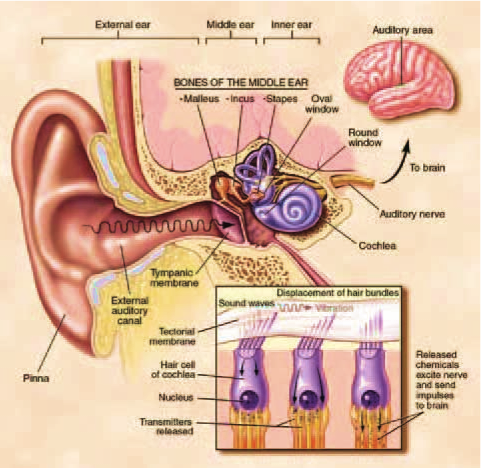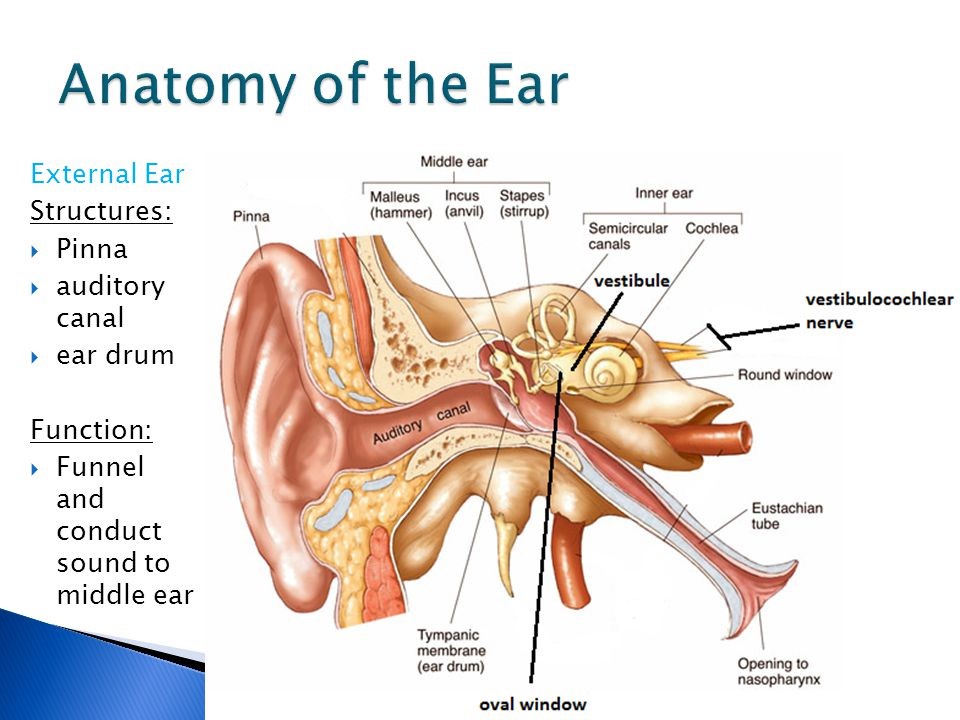CHAPTER 3: Senses and Perception
In this Chapter
Hearing
1Often considered the most important sense for humans, hearing allows us to communicate with each other by receiving sounds and interpreting speech. Hearing also gives information vital to survival; for instance, by alerting us to an approaching car, it enables us to get out of harm’s way.
2Like the visual system, our hearing system picks up several qualities in the signals it detects (for example, a sound’s location, its loudness, and its pitch). Our hearing system does not blend the frequencies of different sounds, as the visual system does when different wavelengths of light are mixed to produce color. Instead, it separates complex sounds into their component tones or frequencies so that we can follow different voices or instruments as we listen to conversations or to music.

3Whether from the chirping of crickets or the roar of a rocket engine, sound waves are collected by the external ear — the pinna and the external auditory canal — and funneled to the tympanic membrane (eardrum) to make it vibrate. Attached to the tympanic membrane, the malleus (hammer) transmits the vibration to the incus (anvil), which passes the vibration on to the stapes (stirrup). The stapes pushes on the oval window, which separates the air-filled middle ear from the fluid-filled inner ear to produce pressure waves in the inner ear’s snail-shaped cochlea. The separation of frequencies occurs in the cochlea, which is tuned along its length to different frequencies, so that a high note causes one region of the cochlea’s basilar membrane to vibrate, while a lower note has the same effect on a different region of the basilar membrane.
4Riding on the vibrating basilar membrane are hair cells topped with microscopic bundles of hairlike stereocilia, which are deflected by the overlying tectorial membrane. Hair cells convert the mechanical vibration to electrical signals, which in turn excite the 30,000 fibers of the auditory nerve. The auditory nerve then carries the signals to the brainstem. Because each hair cell rides on a different part of the basilar membrane, each responds to a different frequency. As a result, each nerve fiber carries information about a different frequency to the brain. Auditory information is analyzed by multiple brain centers as it flows to the superior temporal gyrus, or auditory cortex, the part of the brain involved in perceiving sound.

5In the auditory cortex, adjacent neurons tend to respond to tones of similar frequency. However, they specialize in different combinations of tones. Some respond to pure tones, such as those produced by a flute, and some to complex sounds like those made by a violin. Some respond to long sounds and some to short, and some to sounds that rise or fall in frequency. Other neurons might combine information from these specialist neurons to recognize a word or an instrument.
6Sound is processed in different regions of the auditory cortex on both sides of the brain. However, for most people, the left side is specialized for perceiving and producing speech. Damage to the left auditory cortex, such as from a stroke, can leave someone able to hear but unable to understand language.